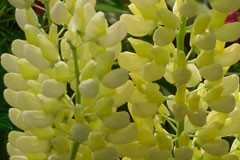- Out-of-Stock



Pale creamy yellow, some with peachy tinges. Separate from reds and purples to keep offspring pure. Note lupins are best cut to the ground after flowering, and allowed to dry off slightly during hot weather. Avoid heavy summer irrigation.
Pale creamy yellow, some with peachy tinges. Separate from reds and purples to keep offspring pure. Note lupins are best cut to the ground after flowering, and allowed to dry off slightly during hot weather. Avoid heavy summer irrigation.
Data sheet
Native to Mexico where it is now extinct in the wild. Otherwise known as chocolate cosmos, the flowers have a scent like chocolate. Best in fertile, well drained soil in a perennial border.
Spectacular plant native to the Canary Islands with outrageously huge purple flower panicles to 250 cm from a large rosette of foliage. Impress your neighbours and plant a hedge of these! They will occasionally re-seed.
White form of 'Catmint', effective path edging plant or combined with lavender and santolina in the cottage garden. Low growing, ground covering. Trim off dead flowers to extend flowering period.
Huge ornamental rhubarb from Brazil, suited to pond, bog, and streamside plantings. The leaves can be 1.5 - 2.5 m across, on stems up to 2.5 m in sheltered conditions.
Long flowering agastache great for attracting butterflies into the garden. Summer flowering and one of the better agastache we have trialled, fertile loamy soil best, and will tolerate some clay if worked and mulched. We find these will only tolerate light occasional frost.
A low, spreading variety for the border, rockgarden or drystone wall. Lots of thimble sized nodding white bells in mid-summer.
A lovely species from Greece, useful as a ground-cover for part-sun with attractive velvety leaves and deep blue flowers. Closely related to Geranium ibiricum.
Large salmon-pink flowers with blackish-purple spotting. A vigorous free flowering variety which complements roses and paeonies.
A recent introduction by us is this sedum from my mothers garden, with white flowers, which is an unusual colour in the world of sedums! As with other sedums, easy to grow in full sun position in most soil types. Rarely but occasionally these can produce a pale pink sport, which should be removed with a sharp knife at the crown at the time of flowering.
A pretty variety we raised a few years ago from experimental crosses, with some creative contributions from our staff for the name. Good clumping habit and a subtle colour.
The 'wood anemone' is useful as a ground cover in shade. Treat as a bulb, dry off after flowering, summer deciduous, good amongst Hosta and Helleborus. This is the traditional form with single white flowers.
Native to the Caucuses, Iran, and widespread in mountainous areas around the Balkan peninsula. A lovely, nodding, soft blue variety with short spurs, easy amongst perennials in woodland or part shade.
Recently imported variety with large semi double flowers like old velvet. Beautiful and long flowering, wonderful with geraniums and heuchera amongst roses..
Woolly thyme, useful as a lawn thyme or amongst stones in a rockery or gravel garden. Tight compact habit and pink flowers. Dry tolerant.
Early summer flowering resembling a blue aster, but flowering for much longer period and all round more contained and well behaved. Likes fertile drained soil
Medium height with stongly vertical stems of rich pink flowers in summer, easy plant for the cottage garden.

Pale creamy yellow, some with peachy tinges. Separate from reds and purples to keep offspring pure. Note lupins are best cut to the ground after flowering, and allowed to dry off slightly during hot weather. Avoid heavy summer irrigation.